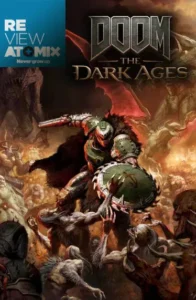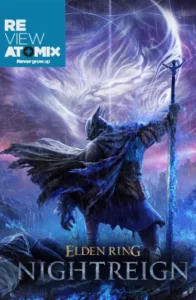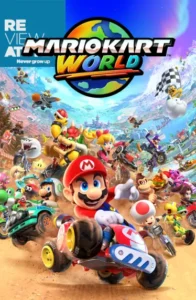Metal Gear Solid Delta: Snake Eater – A Stealthy Epic Reimagined

What is a Remake?
The concept of a remake has evolved significantly in recent years. While it used to mean simply delivering the same product we all know but with enhanced visuals via a different engine, today it’s challenging to define what projects deserve this label. For Square Enix, it involves narrative restructuring, updated gameplay, and a visual and sound presentation matching current experiences. Meanwhile, studios like Bluepoint Games or Bandai Namco might settle for just a new paint job with improved performance. This is the primary challenge many studios face when attempting to reimagine their classics. How faithful should they remain to the original? What are the right changes to maintain the vision? What new elements can they introduce? There isn’t a single answer to these questions, making it difficult for audiences to decide if a remake is good.
There’s no doubt that projects like Final Fantasy VII Remake and Resident Evil 2 dramatically changed how we view remakes, but not every effort matches this production level. However, one thing has remained constant: when revisiting games that defined a genre or generation, expectations run high. Thus, for some time, many have been voicing numerous opinions about the new version of Metal Gear Solid 3: Snake Eater by Konami and Virtuos. We’re talking about what many consider Hideo Kojima’s best title, an adventure that redefined stealth experiences and serves as a great entry point for anyone eager to explore this world of espionage and action.
After years of waiting, Metal Gear Solid Delta: Snake Eater is finally here, offering a visual update through Unreal Engine 5 and modernized controls for today’s audience. But many want to know if there’s more to it. Is Metal Gear Solid Delta: Snake Eater the definitive version of the PlayStation 2 classic? Is there more than just a cosmetic change? Discover the answers to these and other questions in our Atomix Review.
The Return of Snake
The Metal Gear Solid series is known for its complex stories involving real-world concepts and original ideas from Hideo Kojima’s mind. Moreover, its creator has always used these titles to experiment with unconventional ideas and play with user expectations. Just look at the postmodernism in Sons of Liberty and the unexpected twist in The Phantom Pain to understand the franchise is anything but straightforward. Well, there is an exception. Metal Gear Solid 3: Snake Eater, being a prequel, is free from the baggage found in other entries, resulting in a highly entertaining experience where characters are the main strength, making it a good starting point for those wanting to explore Snake’s adventures, something the remake faithfully recreates.

Set in 1964, amidst the Cold War, the United States sends Snake on a secret mission to the jungles of the Soviet Union. His goal is straightforward: rescue a scientist named Sokolov, destroy the nuclear tank Shagohod, and, if possible, prevent a conflict between the two nations. However, he encounters several Soviet generals and The Boss, his former mentor, along with her legendary soldiers, the Cobra Unit, making this task incredibly challenging, though never impossible.
Though this may sound complicated, the reality is that Snake Eater is easy to comprehend. The main objectives remain constant, and even when the game delves into its extensive mythology with concepts like the Philosopher’s Legacy, it never introduces ideas so complex that they detract from the primary focus: its characters. Snake, The Boss, Eva, Ocelot, and the rest of the cast are very charismatic, and it’s always intriguing to see how each reacts to the various events during this mission. They effectively balance the seriousness and absurdity of the events.

This is partly because Snake Eater draws inspiration from 007 movies, specifically Sean Connery’s, functioning as a tribute to that cinematic era while avoiding outdated clichés. When Hideo Kojima crafted this story, he ensured every character had a unique personality. Being a prequel to all saga events, we know Naked Snake eventually becomes Big Boss, and while the transition to villain hasn’t occurred, his character is already distinctive. His interest in weapons, shared passion for cinema with Para-Medic, and deep respect for his mentor offer compelling characterization.
Fortunately, characters and the blend of humor and seriousness aren’t the only elements engaging players. The story also has an excellent rhythm. Unlike other series entries, Snake Eater is linear. It may offer distractions, but it guides players along a straight line, consistently introducing new scenarios, characters, and challenges. This creates an experience that’s hard to abandon, as you always want to see what’s next.

Overall, this is an excellent entry point to the series. Without needing prior knowledge, you can enjoy Naked Snake’s adventure. Fans familiar with the series can appreciate references and similarities with the rest of the franchise, without the postmodern complexity of Sons of Liberty, but with the charisma and quirks defining Hideo Kojima’s work, all kept intact in the remake.
Metal Gear Solid Delta: Snake Eater is a mirror of the classic PlayStation 2 game. It makes no changes to the story or hints at Peace Walker or The Phantom Pain events. Konami and Virtuos’ new work mirrors the original in every way: camera angles, pacing, script, voice acting, and every narrative element that made the 2004 classic special stays untouched, which might disappoint some but makes sense. Creating new content without Hideo Kojima risked tone issues. As I mentioned, this game treads a thin line between ridiculous and serious, and adding original sequences or expanding the adventure with references could easily disrupt this balance.

There was room for more, but perhaps Konami and Virtuos knew they couldn’t match Kojima’s level, especially considering how crucial this game is. It’s considered the best in the series and a key stealth video game exponent. There was immense pressure, and taking the safe path was probably the best choice for the developers. While this raises the debate of whether it’s necessary, an entirely new audience will likely see Metal Gear Solid Delta: Snake Eater as their entry into the series.
Ultimately, Metal Gear Solid Delta: Snake Eater delivers the same story with all the highlights known from the PlayStation 2 version. The characters are fantastic, the pacing superb, and the plot can engage anyone for 10 hours or more. The remake doesn’t change this. If you’re expecting something like Final Fantasy VII Remake, you won’t find it here, but that’s not entirely a bad thing, as the final result remains phenomenal.
Reviving the Soviet Union
Metal Gear Solid Delta: Snake Eater is primarily a visual remake. Instead of Konami’s own engine, this new effort uses Unreal Engine 5 to provide a substantial visual update that at its best moments elevates action sequences and offers a delightful representation of this fictional Soviet Union. Yet, the final product also sometimes resembles those awkward videos that recreate classic Nintendo 64 games using Epic Games’ engine rather than a genuine reimagining.

The employment of Unreal Engine 5 in Metal Gear Solid Delta: Snake Eater is mostly positive. The game successfully replicates Yōji Shinkawa’s designs in a realistic manner, yet simultaneously retaining exaggerated expressions and outlandish movements. Enhanced animations convincingly portray this generational shift. Characters like Eva and Ocelot exhibit minor facial adjustments, easily noticeable for anyone familiar with the original entry but never problematic.
Apart from those instances, the rest of the cast maintains their 2004 appearances, albeit improved. Snake remains the ideal soldier, sporting enough facial hair to suggest he shaved mere days before starting his mission. The Boss sustains her stoic expression, concealing deep remorse. Notably, each Cobra Unit member retains their unique features, like The End’s large eyes, The Fear’s tongue, and The Pain’s swollen face. Even Volgin’s scars persist, and thanks to Unreal Engine 5, the flesh appears realistic enough to illustrate the attempted healing of his skin.

Nonetheless, characters only represent half of this work, as the fictional Soviet Union presented offers a spectacular journey through jungles, caves, military facilities, cliffs, and more that maintain the adventure’s perfect pacing. Every scene is distinct, and though numerous areas emerge within a single biome, each offers a unique element distinguishing it. The realistic lighting presents a different tone from what we witnessed on PS2, enhancing the perception of time passage. The awe-inspiring transition from dawn to dusk to nightfall highlights the adventure’s magnitude.
Best of all, this new lighting and Unreal Engine 5 realism enhance a couple of scenes. The End fight, for example, breathes life spectacularly into the forest. The unpredictable rain onset or shadow formations when a cloud passes is impressive. Even the strange beam of light animating the boss stands out without disrupting its surroundings. The second example is the exhilarating chase sequence with Eva, where the graphics engine elevates the ambitious blend of cinematic and gameplay. While at the time distinguishing these two elements was already tough, in the remake it’s nearly impossible, with first-time players amazed at this achievement.

Accompanying everything is a new third-person camera that effectively constitutes a clear evolution from what the Subsistence version offered at the time. The action and gameplay are more personal, with fresh animations and camera angles during CQC combat. However, if this doesn’t appeal, Metal Gear Solid Delta: Snake Eater also provides an option resembling the fixed top-down camera from the original, complete with the iconic green filter. Regrettably, there’s no way to combine these preferences with a third-person camera and the classic green filter, a disappointment given the distinct visual experiences achieved by this element.
Finally, the game offers the standard performance and visual quality settings, both primarily effective. A couple of instances see frame rate drop below 20fps, especially when numerous elements populate the screen, such as in the final fight. This might be patched in the future, but for now, these aren’t optimal in rare occasions.

While Metal Gear Solid Delta: Snake Eater, apart from the Unreal Engine 5 usage and third-person camera, doesn’t introduce innovative elements, every cutscene retains the same angles, shots, effects, movements, and structure. This mirrors the PS2’s efforts with an obvious visual improvement, suitable for some, but the lack of true originality gives rise to the query of whether this release is essential. Ultimately, this visual experience resembles what we saw in 2004, and though I won’t deny the Epic Games engine elevates sections, the absence of originality prevents this title from reaching desired greatness for its developers.
Same Snake, David Hayter
On a related note, Metal Gear Solid Delta: Snake Eater‘s audio mirrors the PlayStation 2’s, albeit with enhanced sound quality and a few control-related dialogue lines. If you anticipate new compositions, none are present. The stellar soundtrack returns, though, lacking any original work, just a beautifully-presented copy fans will adore but still a copy.

All the PS2 game’s voice lines, recorded over 20 years ago, are recycled in Metal Gear Solid Delta: Snake Eater. The primary difference now is that uncompressed audio files were used so that the results sound much better. The sole additions are a pair of control-related dialogues. Konami rehired David Hayter, Jim Piddock, and others just to record two lines, practically insignificant in the grand scheme. Frankly, it feels like a waste of their time and talent since switching from “triangle button” to “action button” doesn’t showcase the full potential of those involved. However, I understand rerecording each line wasn’t optimal, as time has likely taken its toll on all voices.
Music endures the same problem. Harry Gregson-Williams’ original soundtrack returns, perfectly complementing the espionage adventure in the Soviet Union’s jungle. It uses genre archetypes beautifully, leveraging strings and winds to elevate tension, nodding to the original Mission Impossible theme, and reacting in real-time to your situation. Furthermore, the remake preserves some of the original’s wacky details, like hearing the Snake Eater theme a cappella when climbing the extremely long ladder or certain songs seemingly plucked from a 1960s surfer flick without breaking the game’s illusion.

The issue is nothing is unique to Metal Gear Solid Delta: Snake Eater. Most of the soundtrack remains untouched, lacking remixes or unexpected surprises. Strangely enough, the Snake Eater main theme is the lone exception. While it retains the lyrics, featuring the same singer on vocals, the new version is recorded with different rhythm and instrumentation. Cynthia Harrell’s voice reveals the passage of 20 years. Not a poor job, but noteworthy due to its singular treatment.
In Metal Gear Solid Delta: Snake Eater, music and voice acting remain remarkable, free from doubt, but credit belongs partially to the original work. This aspect highlights Konami’s reluctance to even touch Kojima’s creation, and instead of offering original pieces that stand beside the auditory marvels from 20 years ago, the resulting efforts feel too safe, prompting questions about the remake’s need.
New Controls, Same Tricks
When discussing stealth games, the Metal Gear Solid series stands as one of the genre’s finest examples. Each game incorporates intriguing mechanics providing truly immersive espionage experiences. Snake Eater elevated this with camouflage systems, refined AI, and gorgeously designed levels. In Metal Gear Solid Delta: Snake Eater, this remains unchanged, instead focusing on updated controls, facilitating contemporary approaches for new generations, even if the Subsistance version works perfectly today.

As already mentioned, Metal Gear Solid Delta: Snake Eater provides two gameplay styles. Classic mode offers a fixed top-down camera and similar controls to the PlayStation 2, aiming done in first-person. Additionally, the remake includes a third-person option, allowing simultaneous aiming and movement, with combat actions tied to the triggers. Thus, the remake provides two distinct ways to enjoy playing, albeit lacking combinations of the presented elements.
The game’s structure remains untouched, meaning navigating levels without being spotted. Here, each scene feels like a mini-sandbox. Playstyles are diverse. Whether using a silenced pistol for stealthy takedowns, sneaking through diverse zones, leveraging environments and enemies to your advantage, or fighting enemies directly, countless approaches exist. Even those intimately familiar with the PlayStation 2 classic may discover something new in this remake, attributable to Kojima’s and his original team’s exceptional work.

A camouflage system allows wearing varied outfits to blend with surroundings, avoiding enemy detection. The campaign can be completed without discovery (bosses aside) or lethal actions, thanks to tranquilizer guns and numerous tools offering infinite ways to interact with this world. Capture animals for sustenance, or throw a poisonous snake at a soldier who glares your way. Even Kojima’s wildest concepts thrive in the remake. The End might succumb if you quit playing for a week. Left the game long enough? Someone found you, compelling a prison breakout.
The original spirit remains intact, happily, although the remake includes a few add-ons making it more accessible for contemporary audiences. Notably, you can now move while crouching, unlike on PS2, originally implemented with the 3DS version. Despite seeming trivial, this alters much, enabling stealthier movement with less noise, potentially disrupting certain sections. Furthermore, aiming in third-person employs an intuitive control scheme, evading finger gymnastics. The new camera extends the field of view, making it easier to identify level-spanning adversaries.

Menus are more agile, albeit occasionally clunky. One significant quality-of-life improvement is the instant access to camo changes or to select the right item for wounds. The only major change is beginning the adventure with a compass directing you toward objectives. I recommend disabling this from the start since Snake Eater thrives on getting lost in the jungle and figuring out destinations independently, even if it’s not daunting.
If unappealing, stick to classic style for a closer experience to the original PS2 release. The Subsistance-inspired modern camera and controls evolved beyond this, necessitating no third option. Concerning versions, the remake still features the Snake vs. Monkey and Guy Savage modes, as well as extra cinematics absent from today’s Master Collection. These fun additions also boast visual and gameplay improvements.

As odd as it seems, Guy Savage is Metal Gear Solid Delta: Snake Eater‘s largest transformation. Instead of faithful recreation, a new robust hack-and-slash takes place in a graveyard against entirely new foes. True remake material. This might initially sound comical, but it’s astounding Konami and Virtuos crafted something fresh without straying from this experience’s foundation. This could even serve as a prototype for a new Castlevania or another project.
As a remake, Metal Gear Solid Delta: Snake Eater is scattered. While it offers updated controls and a comparable modern camera, the game remains unchanged. No new level design or AI adjustments exist. Everything special about the PS2 installment persists. Walking while crouching and simultaneous shooting/movement delivers a different experience courtesy of enhancements unconsidered by the adventure. This isn’t problematic. It remains Metal Gear Solid 3: Snake Eater, preserving the addictive mini-sandbox allure encouraging on-screen experimentation.
Attributions to Others

Metal Gear Solid Delta: Snake Eater is a copy. An excellent one, yet a copy. What makes it special comes from the original game. True, new elements bring a substantial update, but they fail to robustly justify existence beyond Unreal Engine 5 usage. The story remains identical. Thankfully, this is still an engaging adventure with fantastic characters, spectacular pacing, unforgettable moments, and an ideal entry for exploring this world.
Visually, Unreal Engine 5 instills unique identity. The overall experience benefits significantly from this graphical update, with some sections utilizing the toolset remarkably, surpassing PlayStation 2 achievements. However, several technical details need improvement, hopefully resolved in the future. Sonically, it mirrors previously mentioned issues—feeling superficial as it fails to rationalize its creation.
New cameras, control updates, and quality-of-life enhancements align the experience with various modern titles but lack depth beyond contemporary comfort. Snake’s journey remains unchanged from beginning to end. No new features appear, and additions simplify or disturb certain segments since the AI doesn’t account for those changes. The result remains phenomenal thanks to efforts 20 years ago.
The golden question: Is Metal Gear Solid Delta: Snake Eater superior to Metal Gear Solid 3: Snake Eater? There’s no clear answer. Individuals will reach different conclusions. Ultimately, the Konami and Virtuos remake doesn’t replace the original found in today’s Master Collection, doing a superficial job of rationalizing its existence beyond reviving series interest and generating revenue. Despite some shortfalls, this remains one of the best games ever, yet one of the least intriguing remakes in recent years.















Post Comment